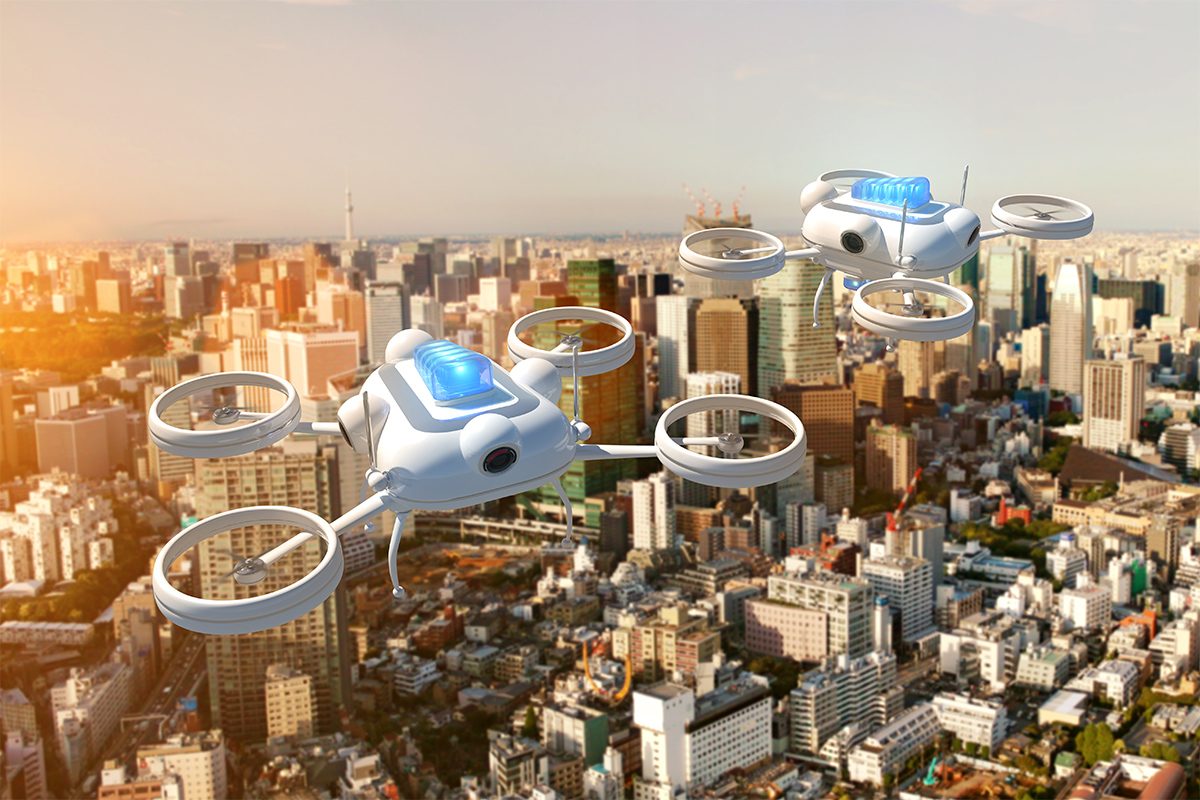Robots have been a staple of science fiction for more than a century – machines with near-human intelligence that will either be our greatest servants, freeing humanity to pursue the arts and intellectual evolution, or our ultimate downfall, enslaving the human race in servitude to Skynet.
In reality, robots have been around for decades and so far so good on their waking up to take over the world. However, robots dominate our factories and the rise of automation seems to be gathering more speed with every increment in technological advancement. There are big questions about how this will affect the human workforce and it’s bound to dominate politics in the coming decades, but the future of robot butlers is still a matter for science fiction; the future for robots is drones.
Flying robots
Whether you call them drones, unmanned aerial vehicles (UAVs) or flying robots, the popularity of drones is rapidly increasing. Initially the must-have toy for kids (and big kids) or used for military operations, drones are being readily adopted across industries and sectors, and are becoming vital to many businesses, opening up new revenue streams.
The application of drones is vast; from parcel delivery to law enforcement, drones are increasing work efficiency and productivity, and helping businesses and agencies to access customers and areas with more ease and in less time than before.
New uses
The idea for drone technology stretches back more than a hundred years, to the First World War, but what we would recognise as a modern drone dates back less than two decades. The evolution of drone technology in the past few years alone has been phenomenal, and has mass appeal and is used by military contractors to businesses to hobbyists.
Drones have filtered into all aspects of our lives and most of us don’t even realise it. For example, instead of costly manned flyovers or computer-rendered landscapes in film, drones are now routinely used to capture footage for movies and TV shows. Businesses like Amazon are offering express drone delivery in some areas, and drones are even being used to gather intel for military agencies for operational reasons and even disaster management.
Modern application of drones
The spend on and use of drones by the military is by far the driving force behind the growth of the technology. Drones are routinely used by the military in combat missions, intel gathering, R&D and mission supervision. Modern aerial warfare is conducted remotely, reducing the risk to service people engaged in conflict.
Commercial popularity of drones is steadily gaining; the adoption rate of commercial drones is still low but there has been significant investment from multinationals and conglomerates. As the technology becomes cheaper to produce and customise, drones will become part of everyday life.
Agriculture will be revolutionised with automated crop fertilisation using real-time weather data and pest control for maximum yield. Law enforcement will benefit with roving CCTV drones for both deterrence and pursuit. Traffic flow could be optimised with live feeds of incidents and congested areas, and lunch could be delivered right to your nearest window.
Personal drone use continues to rise and it’s not just among enthusiasts and hobbyists. Like any other craze, drones are the cool toy everyone wants for Christmas – they’re twenty-first century kites that don’t need wind, can be controlled with a smart phone app, and many come equipped with HD cameras. Toy companies are even investing in ‘battle drones’ to capitalise on the market.
The future of drones
Technology is constantly evolving and drone tech is more than keeping pace. Making drones suitable for commercial use with regulated design standards, safety modes, intelligent piloting, airspace regulation and payload adaptability is the next big challenge. As drone technology evolves, the answers to these questions will be found and drones will become safer to use and more dependable for businesses to adopt. Mass adoption is not far off and as a link between drone use and profitability is proved, airspace regulation will follow.







